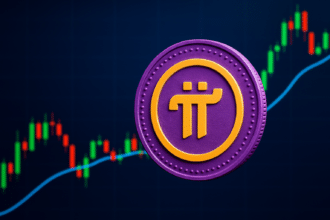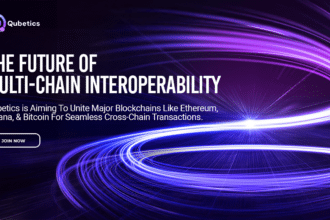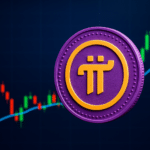Bitlayer has taken a leap in the Bitcoin DeFi ecosystem by integrating its trust-minimized BitVM Bridge into Xverse Wallet. Xverse is a Bitcoin-native wallet known for its modern design and support for customizable Bitcoin testnet configurations. This collaboration has brought the advanced infrastructure of BitVM Bridge closer to users by making it accessible directly through the Xverse interface.
This is not only streamlining how users interact with the BitVM protocol but also accelerating the adoption of decentralized financial applications built on Bitcoin. With the ability to bypass centralized intermediaries, the BitVM Bridge integration with Xverse is opening doors for broader interoperability across blockchain networks.
“This integration brings BitVM technology to the fingertips of users in a secure and intuitive way. It’s a big step forward in making Bitcoin DeFi usable at scale,” — Ken Liao, CEO of Xverse, in an official press release on March 25, 2025.
BitVMNet: A Testbed for Decentralized Innovation on Bitcoin
According to Bitlayer, the integration also represents a step toward building a more composable financial ecosystem. A representative from the company emphasized that by making Bitcoin DeFi more accessible and intuitive, they are unlocking a new frontier for developers and end-users alike. The resulting synergy between Bitlayer’s protocol and Xverse’s wallet design is expected to redefine how people interact with Bitcoin-native DeFi in the near future.
In addition to the integration, Bitlayer has further demonstrated its commitment to advancing Bitcoin DeFi by supporting the development of BitVMNet. BitVMNet is a public Bitcoin Signet network that serves as a testbed for developers working on BitVM-based applications. It provides a safe and efficient environment to deploy, test, and iterate decentralized financial applications without the risks associated with mainnet interactions.
“BitVMNet is our open call to developers who believe in Bitcoin’s potential beyond just being digital gold. It’s a safe place to experiment, fail fast, and build trustless financial infrastructure,”
— Alex Qiu, Head of Protocol Development at Bitlayer, during a BitVM developer AMA on Telegram.

This developer-friendly network is designed to catalyze the creation of new DeFi applications on Bitcoin, which previously faced limitations in programmability compared to more flexible networks like Ethereum. BitVMNet bridges that gap by offering an experimental layer where developers can simulate real-world scenarios using new functionalities such as Mint and Unmint operations.
These features allow users to issue tokenized assets and redeem them efficiently, creating a fundamental infrastructure for cross-chain liquidity and value exchange.
Toward a Unified DeFi Landscape: Supporting Ethereum and Beyond
As Bitcoin continues to evolve into a programmable platform, Bitlayer is expanding the reach of BitVM Bridge to support multiple blockchain ecosystems. Initially focused on Ethereum, BitVM Bridge has now laid the groundwork to integrate several additional blockchain networks, including Base, Starknet, Arbitrum, Plume, and Sonic SVM. These integrations are strategically selected to establish a broad, multi-chain liquidity framework that brings together the strengths of different blockchain infrastructures.
By enabling assets to move across networks without sacrificing security or user experience, Bitlayer is offering a pathway to unified liquidity and decentralized financial accessibility. The focus on trust-minimized bridges reduces the risk of hacks and exploits that have plagued other cross-chain solutions, offering a more resilient model for asset transfer.
“To unlock true composability in decentralized finance, Bitcoin must connect with the broader blockchain ecosystem. That’s what BitVM Bridge is enabling; trustless interoperability at scale,”
— Mina Li, Ecosystem Lead at Bitlayer, speaking at the Bitcoin DeFi Roundtable, March 2025.
This comprehensive approach ensures that the benefits of DeFi; such as yield generation, borrowing, lending, and trading, can be brought to Bitcoin users without requiring them to leave their native ecosystem. It also empowers developers to build applications that are not limited by the constraints of a single blockchain, but rather empowered by a network of interoperable protocols.
Driving User Adoption Through Seamless Integration
One of the major hurdles for DeFi adoption on Bitcoin has been the lack of user-friendly tools. The integration of BitVM Bridge into Xverse Wallet directly addresses this challenge. By embedding advanced DeFi capabilities into an already widely adopted Bitcoin wallet, Bitlayer is removing technical barriers and onboarding more users into the decentralized economy.
Xverse Wallet users can now interact with BitVM Bridge without needing to switch applications or navigate complex user interfaces. This ease of access plays a crucial role in driving mainstream adoption, as users increasingly expect seamless and unified experiences when managing their digital assets.

“DeFi only works if people can actually use it. Embedding BitVM Bridge inside Xverse means anyone with a Bitcoin wallet can now explore yield, lending, and liquidity tools without needing to jump chains,”
— Jason Lau, CPO at OKX and Bitcoin DeFi contributor, via X (formerly Twitter), March 26, 2025.
Through this partnership, Bitlayer and Xverse are also sending a strong signal to the industry that the future of Bitcoin is inherently decentralized, composable, and user-centric. The emphasis on usability without compromising on security or decentralization reflects a mature approach to infrastructure development.
Conclusion
As Bitlayer expands support for additional networks and continues to refine the BitVM protocol, the company is positioning itself at the forefront of multi-chain interoperability. This evolution could finally unlock Bitcoin’s potential as not just a store of value but a fully integrated component of the decentralized financial landscape.
By focusing on trust minimization, user experience, and cross-chain operability, Bitlayer and Xverse are building more than just infrastructure; they are molding the future of Bitcoin-based decentralized finance. As adoption grows and new applications are launched, the broader crypto ecosystem stands to benefit from this renewed focus on Bitcoin’s place within DeFi.
Follow us on Twitter and LinkedIn, and join our Telegram channel.
FAQs
What is the purpose of integrating BitVM Bridge with Xverse Wallet?
The integration is designed to simplify user access to Bitcoin-based decentralized finance (DeFi). By embedding the BitVM Bridge within Xverse Wallet, users can perform trust-minimized, cross-chain transactions without leaving the Bitcoin ecosystem.
How does BitVMNet benefit developers and the broader DeFi community?
BitVMNet provides a Bitcoin Signet environment where developers can build and test decentralized applications (dApps) using the BitVM protocol. It offers tools like Mint and Unmint functions for tokenization and redemption. BitVMNet reduces deployment risk and speeds up innovation in Bitcoin-native DeFi projects.
Why is multi-chain support important for Bitcoin DeFi?
Supporting chains like Ethereum, Starknet, Arbitrum, and others allow users to move assets across platforms and access broader DeFi tools. This enhances liquidity, user participation, and ecosystem utility without forcing users to leave the Bitcoin network.
What makes BitVM Bridge different from other cross-chain protocols?
The BitVM Bridge emphasizes trust minimization, eliminating the need for centralized custodians. It enables secure, verifiable asset transfers with transparency and reduced risk. Its integration into a user-friendly wallet like Xverse improves adoption by non-technical users.
Glossary
BitVM Bridge – A cross-chain protocol enabling asset movement between Bitcoin and other blockchains without centralized intermediaries.
Xverse Wallet – A Bitcoin-native wallet with DeFi functionality and testnet configurability for developers and advanced users.
BitVMNet – A Bitcoin Signet network established for testing and deploying BitVM-based decentralized applications.
Mint/Unmint Functions – Smart contract operations that enable users to tokenize assets (mint) and redeem them (unmint).
Multi-Chain Liquidity – The ability to transfer and access assets across various blockchain ecosystems efficiently and securely.





















